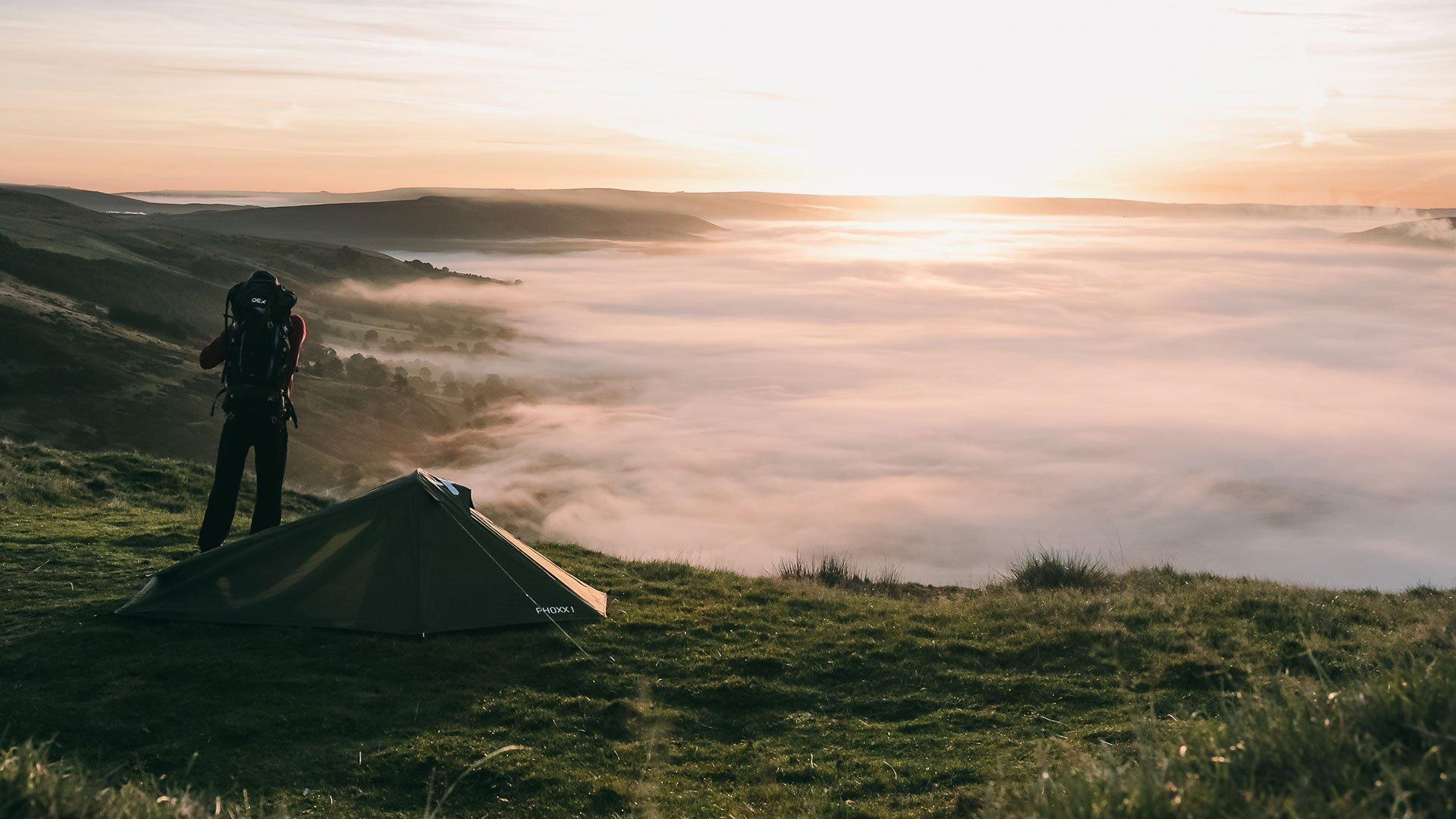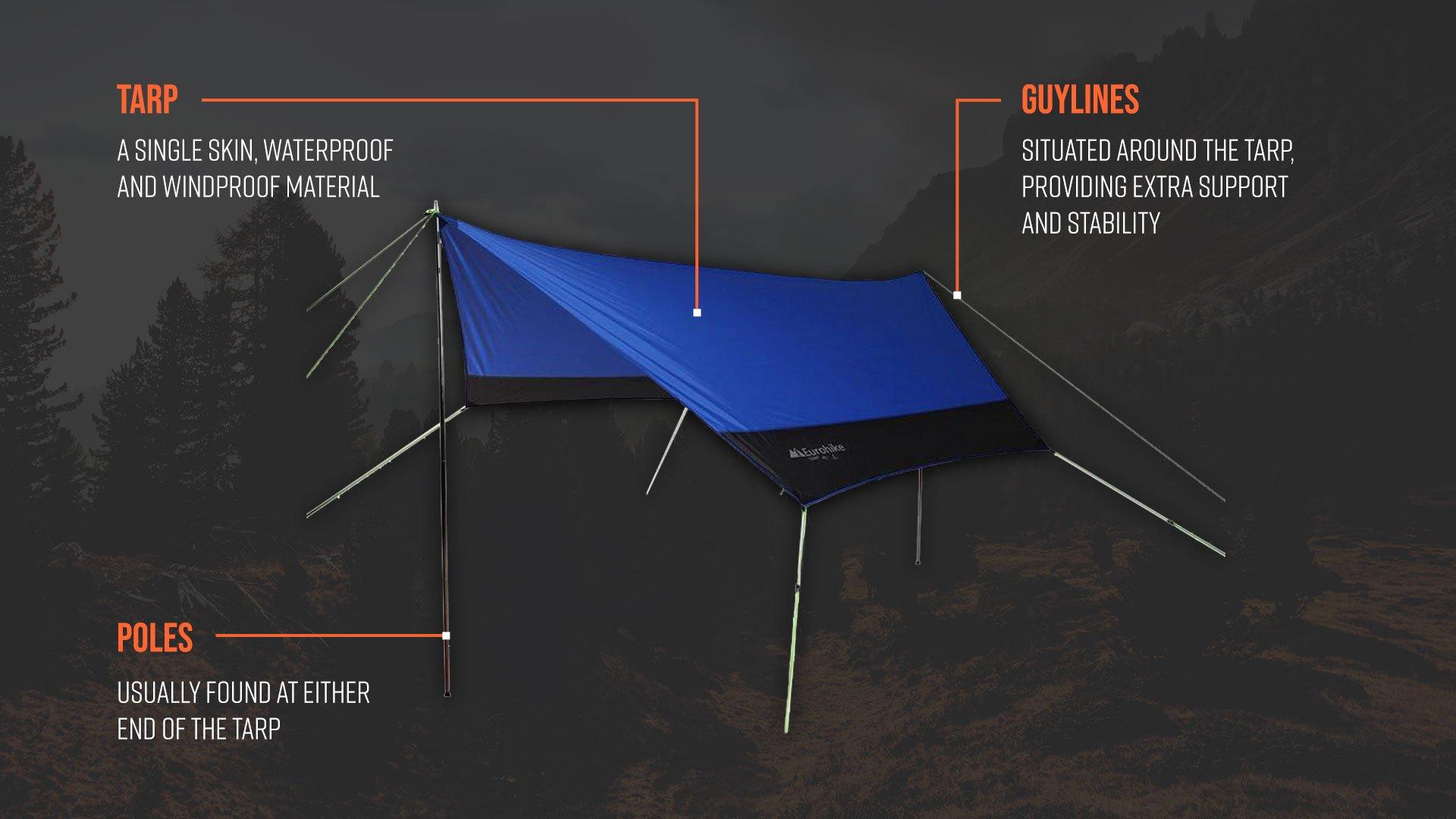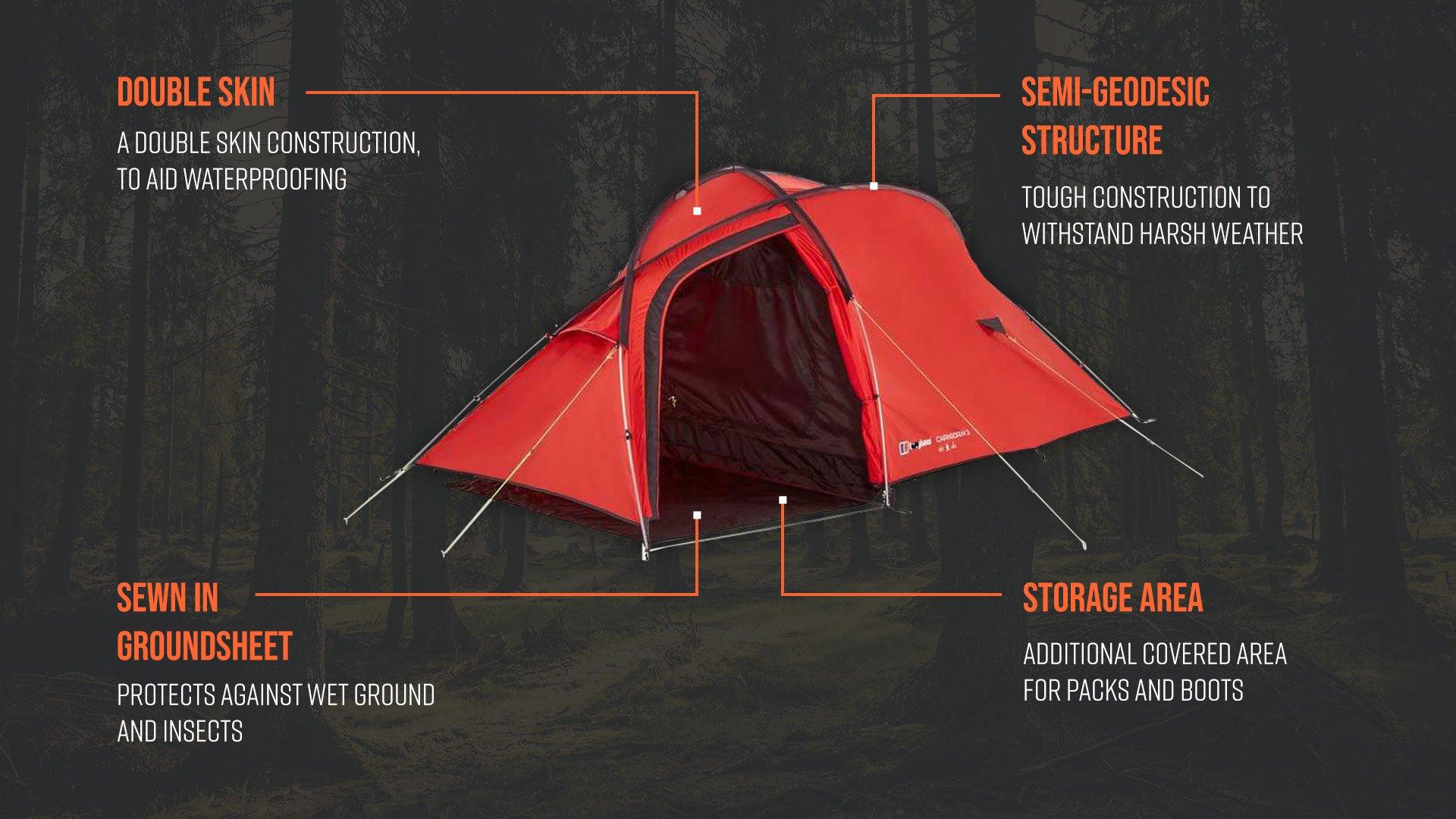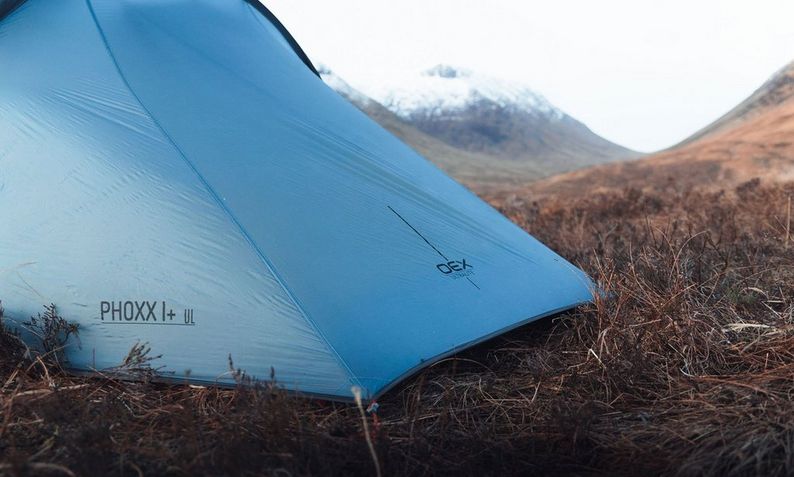Tarp or tent? The age-old question on all wild campers’ minds. But which is better, and why? Well honestly, there are pros and cons to both, luckily, you’ve got us to guide you through each option.

The Turn of the Tarp
A tarp is the most basic form of shelter you can camp with (other than the night sky of course). They’re a single skin, waterproof sheet of material designed to offer protection from the elements. Tarps will usually have guylines and poles to secure to the ground and trees too.
Why tarps?
So why pick a wild camping tarp when tents are so popular? Well there are a few reasons you might choose to go for the basic yet brilliant choice…
Lightweight and Versatile
Many wild campers, particularly ultra-lightweight hikers who are completing a multi-day expedition, will pick a tarp due to their weight. The simplicity of a tarp means they’re unmistakably lightweight, with some weighing in at only a few hundred grams. Although tarps are supplied with poles, multiple pitching options give you the flexibility to pitch with existing walking poles, or attach to nearby trees, lessening their weight even further.
Hot Weather Winner
You’ll notice with a tarp’s minimalist construction, they don’t feature a groundsheet (unless you buy one separately) or walls (helping to expel unnecessary weight), this is an added benefit in hot temperatures. Unlike tents, you’ll keep cool throughout the night and morning thanks to a through breeze, not to mention the glorious sunrise view.
Budget-friendly
Across the board, tarps are inexpensive and great value for money, especially if you opt for brands such as Eurohike or OEX. If you’re an intermediate wild camper looking to try your hand at facility-free camping, then starting out with a low-priced shelter is a sure-fire choice.
Spacious
Whether you’re a lone adventurer or have a failsafe camping companion, one person tents and two person tents can get a little cosy at times. The wall-free set up of a tarp gives you extra room to breathe, making camping that bit more comfortable.

Let's Talk Tents
What is a tent?
Ok, so we probably don’t need to tell you exactly what a tent is, but lightweight backpacking tents are worth a shout-out. Backpacking tents are often designed with a semi-geodesic, or geodesic structure. This unique shape allows them to retain their shape and durability in the worst the weather throws at them. They’re also super lightweight (in the grand camping scheme of things), making them ideal for multi-day hikes and wild camps.
Why tents?
Tents have been around for centuries, and we’ve come a long way in that time, so let’s take a look at the benefits of backpacking tents, from one man tents, to two man tents to three man tents!
Added Protection
The main difference between a tent and a tarp is the walled construction. Whilst tarps stand up to wet weather, angled rain and winds are where tents reign supreme. They’re waterproof, and as mentioned above, built with a durable structure for such weather. They also offer a barrier between you and unwanted creepy-crawlies, if you’re not big on bugs, a tent is for you.
Larger Range
As tents are the preferred option for many wild campers, there’s a bigger choice of technical tents out there. Tents range from inexpensive yet highly functional options from brands such as OEX and Vango to lightweight, tough tents from Terra Nova and Wild Country. As you become more experienced in the art of wild camping your preferences and priorities may change.
Year-Round Use
Depending on how brave you are, tarps can be used all year round, but we wouldn’t recommend it. As the weather becomes colder in autumn and winter, tents retain warmth due to their closed construction, something tarps can’t do.
Easier Setup
Whilst tarps are super simple, they can be trickier for solo travellers to erect. The pole and peg construction of tents ensure they stay stationary during construction, making setup quick and frustration-free. As tents are freestanding, they have the edge over tarps in that they can be used on a variety of terrain types too.

Whatever wild camping equipment you decide on, nothing can detract from the feeling of freedom wild camping offers. Need more advice? Why not check out our Wild Camping Guide for more information.

